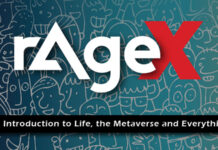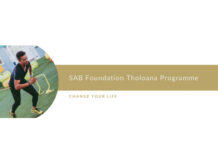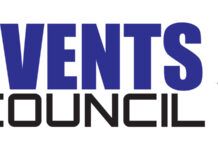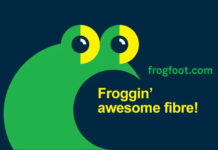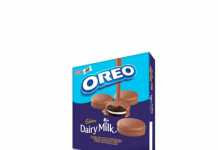By Andrew Nunneley, Director of Brand Strategy at New Media
Content marketing is at last taking its place at the top table. Most South African corporates now have an element of content marketing in their mix and there is an increasingly strategic role in how clients and their customers engage. These are some of the trends we’re seeing.
Less, but better
People are increasingly filtering content out as there’s simply too much out there. Some believe a social media calendar with lots of activity is great content marketing. That’s too simplistic – great content marketing is about telling stories that matter to people – and making sure they actually see those stories. Emotion is the greatest driver of human behaviour. Doing less content, but content that actually makes people feel, is more powerful than the generation of content for activity’s sake. We’re seeing great results from repurposing budget into quality rather than quantity. But importantly, if you’re not smart with distribution, then your content is wasted.
The collaboration of science and art
Content is only ever going to reach its potential when married with the science of effective distribution. Great creative ideas are born from solid insights, but they’re given long life only through clever and constantly evolving distribution methods. It’s not one or the other. Effectively marrying of the art of the story with the science of customer insight and clever distribution leads to winning campaigns.
Don’t stop now!
The power of content marketing as a post-sale tool is being recognised. Marketers are realising the value of keeping the conversation going. Consideration periods for South African consumers are longer than before as we all look for ways to make our money go further. Research shows that even with a large ticket item like a motor car, the journey to the replacement purchase starts very soon after the customer drives off the showroom floor. You’ve made the sale, which was the best opportunity you’re going to get to know this customer, so now make sure you keep them engaged and build trust.
In tough times, consumers revert to brands they trust. By continuing to speak to your customer post-purchase, you’re reinforcing the relationship and building a valuable level of trust.
Fake news
Fake news is here to stay. Recently South African brands have taken flak for supporting fake news with their marketing spend. Marketers must continually evaluate the risk of using lower-cost distribution options vs the higher cost of brand-safe environments, such as established and credible publishers or owned platforms. In an environment where trust means so much, it’s an important consideration.
This also plays into a brand’s own content calendar. It’s critical to stick to subjects where you have credibility and can speak with authority. But that alone isn’t enough. If you’re venturing into the publishing space (online or off), make sure you match the standards consumers expect of every other publisher.
Woolworths TASTE is a great example. Woolworths clearly has the authority to talk about quality food, but that isn’t enough. To keep Woolworths’ customers engaged, we have to create content that’s better than every other food magazine or website they use. That’s why we have an experienced editorial team whose aim is to make the best food magazine in the world. It’s also why we routinely have a sell-through rate of more than 85% for the magazine. In a world of fake news, Woolworths has created its own trusted food content environment across print, digital and even in store, which is 100% brand safe.
Real measurement
In South Africa we’re in the very early stages of measuring customer engagement through to point of sale. The coming year will see online sales continue to grow, but we’ll also see traditional retailers focusing on data management to link their content marketing efforts to activity at the till point. This means less emphasis on metrics such as views and shares and more on actual Rands and Cents. Reaching a smaller but more engaged audience with content that actually adds value to their lives has a far higher sales impact than reaching a massive audience that isn’t really engaged.
In the known-customer space (where the size of the prize is often largest). It is necessary to become much more scientific about the customer journey. By say, successfully using paid media to entice customers from external channels onto brand-owned channels and track their journey from those channels to ecommerce where possible. Further more working hard at linking their engagement on owned channels with physical card swipes at the till.
Our work with Vodacom is another good example of translating content into actual monetary value. By giving Vodacom customers the self-help answers they need online, we’ve measurably reduced costs at their call centre.
Our economy will continue to be battered
Marketing budgets will remain under pressure; clients will expect agencies to be lean, efficient and agile. Budget will go where the proven ROI sits. Agencies that work with their clients to maximise their budgets will be the winners. It’s not all doom and gloom though. It’s just time to up the ante and find more cost-effective ways of getting the job done.
Speaking to multiple markets
For a South African content agency, it’s vital to tell stories that resonate with multiple audiences at multiple points. Business models have evolved so that they can collaborate with a variety of quality freelance content creators and teams. This not only shifts the fixed-cost base, it also allows you to find the right resources for the right brief. For example, working with a Graduate School of Business (GSB), which speaks to a small group of leading business people. At the same time working with Ackermans, whose customers face life challenges the average GSB alumnus will never know. The challenge is to be relevant to both.
In the journey to create effective content marketing strategies – focusing on three key things: make content that makes people feel something; be smart about how you distribute it; and measure the real returns efficiently. In a budget-challenged and competitive environment, this is a winning strategy.
About the author:
Andrew is Director of Brand Strategy at New Media. He has been with the company for over a decade in multiple functions, growing and developing as the business and industry has. He started out as a young publisher of Drive Out Magazine, moving rapidly into more senior and business-facing roles including Managing Director of Mikateko Media, Business Development Director and General Manager: Custom. Most recently he has been actively involved in leading New Media’s clients through an evolving industry, working to ensure their content marketing strategies are innovative and effective.
New Media is at www.newmedia.co.za and on Twitter and Instagram: @NewMediaZA.























